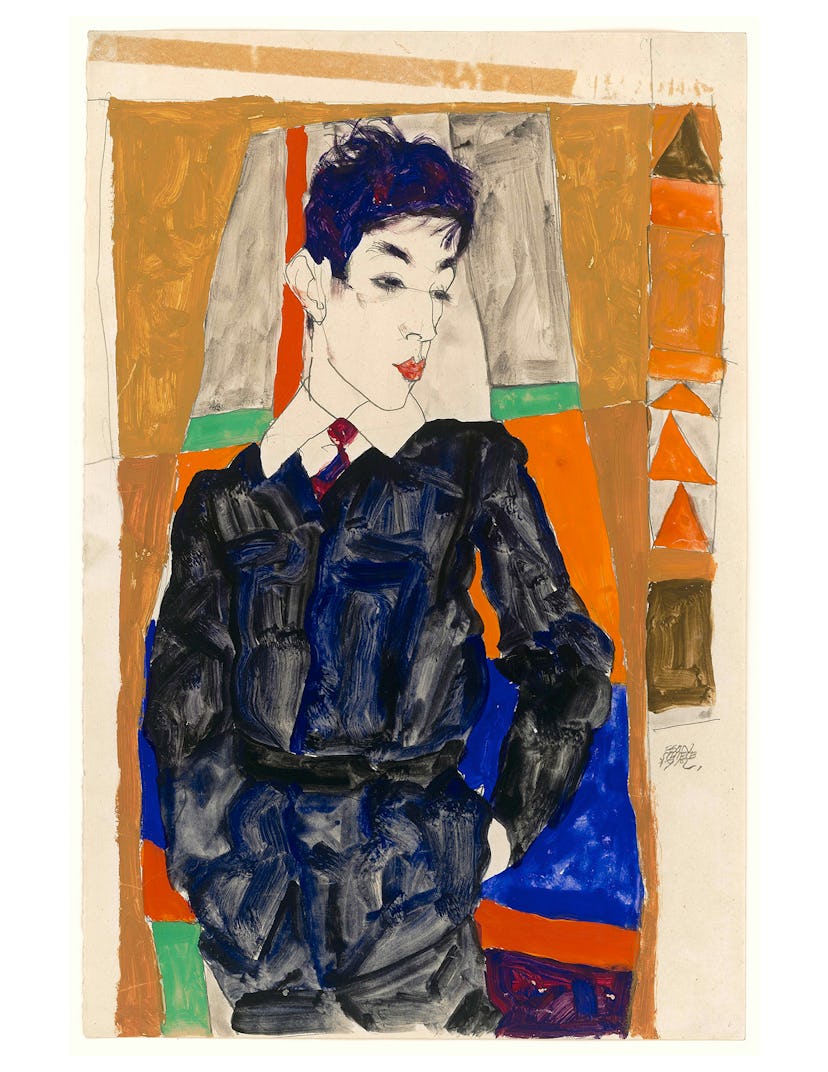Drawn to Extremes

Though just 28 when he died of the Spanish flu in 1918, the Austrian Expressionist painter Egon Schiele had already made a name for himself as a provocateur, on and off the canvas. A student of Gustav Klimt’s, he was revered during his short but prolific career for his prurient imagery and contorted forms; in 1912, he spent time in prison on immorality charges. On October 9 (through January 19, 2015), New York’s Neue Galerie debuts“Egon Schiele: Portraits,”which highlights the aesthetic and psychological shift that occurred after thatincarceration. “There was a marked change in his work,” says Alessandra Comini, who organized the exhibition.“He became more empathetic.” Where he had previouslypainted his subjects in cold isolation, for example, leavingbackgrounds blank, he now began to afford some ofthem environments. Also included in the show is a room made upto look like Schiele’s cell, with reproductions of 13watercolors he made there. “He found out that an artist does not have special status,” Comini says, “that he is not above society.”
Photos: Drawn to Extremes
Erich Lederer in Front of a Window, Györ, 1912. Courtesy of Private Collection.
Self-Portrait with Arm Twisted above Head, 1910. Courtesy of Private Collection.
Self-Portrait with Peacock Waistcoat, Standing, 1911. Courtesy of Ernst Ploil, Vienna.